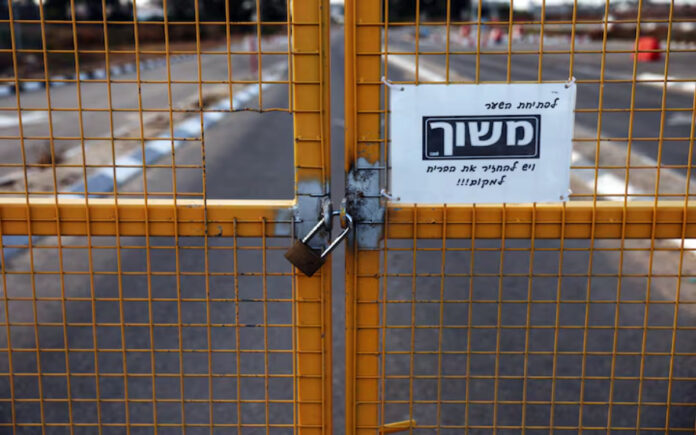Al-Arish: Some of the much-needed food supplies destined for the Gaza Strip from Egypt are facing a dire fate under the scorching sun, as the Rafah border crossing remains closed for aid deliveries for the third consecutive week. This prolonged closure exacerbates the already severe hunger crisis among the people inside the Palestinian enclave.
Rafah historically served as a vital entry point for both humanitarian aid and certain commercial supplies. However, access through this crossing was interrupted when Israel intensified its military operations along the Gaza border on May 6, assuming control of the crossing from the Palestinian authorities.
Egyptian officials and sources cite concerns over military activities in the vicinity, emphasizing the necessity for Israel to relinquish control of the crossing to Palestinian authorities before resuming operations. The closure has prompted calls from Israel and the United States urging Egypt to facilitate the reopening of the border, highlighting the pressing humanitarian needs in Gaza.
Meanwhile, a backlog of aid shipments has accumulated along the route between the Egyptian side of the crossing and the town of al-Arish, approximately 45 kilometers (28 miles) west of Rafah, a key arrival point for international aid contributions.
Mahmoud Hussein, a truck driver, lamented the plight of his cargo, left exposed to the elements for over a month, resulting in gradual spoilage. Some perishable items, such as apples, bananas, chicken, and cheese, have already perished, either discarded or sold at significantly reduced prices due to their deteriorated condition.
“I’m sorry to say that the onions we’re carrying will at best be eaten by animals because of the worms in them,” Hussein remarked, seeking refuge from the sun under his truck.
Also Read | Ukraine Seeks Increased EU Electricity Imports Amid Ongoing Russian Attacks
Humanitarian aid deliveries to Gaza through Rafah commenced in late October, following the outbreak of hostilities between Israel and the Palestinian militant group Hamas. However, the flow of relief has consistently faced impediments, including Israeli inspections and ongoing military operations in Gaza, resulting in inadequate supplies reaching the enclave’s 2.3 million residents.
A global hunger monitor has issued warnings of an imminent famine in certain parts of Gaza, underscoring the urgency of facilitating aid access.
Crisis: Food and Medical Supplies
Since May 5, no trucks have traversed through Rafah, with minimal activity reported at the nearby Israeli crossing of Kerem Shalom, according to U.N. data. The mounting volume of aid stranded in Egypt’s northern Sinai region, some for over two months, poses significant logistical challenges.
Khaled Zayed, head of the Egyptian Red Crescent in the area, emphasized the importance of maintaining proper storage conditions for aid packages, particularly those requiring specific temperatures. However, with the border closure persisting, hopes are pinned on its prompt reopening to avert further deterioration of essential supplies.
Abdullah Al Rabeeah, the supervisor general of KSrelief, a Saudi-funded charity, disclosed that over 350 trucks laden with food and medical supplies are awaiting passage through Rafah. However, concerns over spoilage have necessitated the offloading of perishable items like flour, adding to the logistical complexities.
Reports from Egypt’s Ministry of Supply indicate instances of discounted food items flooding the local market in northern Sinai, prompting authorities to confiscate stocks of rotten eggs. Inside Gaza, concerns persist regarding the quality of delayed food deliveries that managed to enter before the closure of Rafah or through alternate crossings.
Ismail Al-Thawabta, director of the Hamas-run Gaza government media office, highlighted the challenges posed by the inability of Palestinian authorities to conduct thorough inspections of incoming goods during Israel’s offensive. He stressed the importance of public vigilance, urging individuals to scrutinize goods before consumption or distribution.



